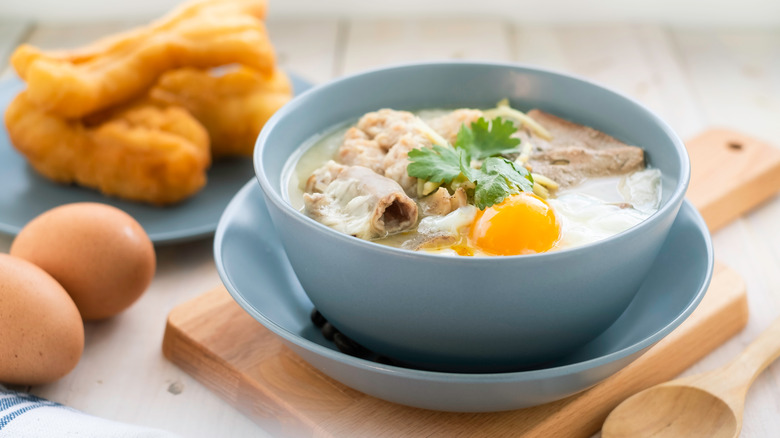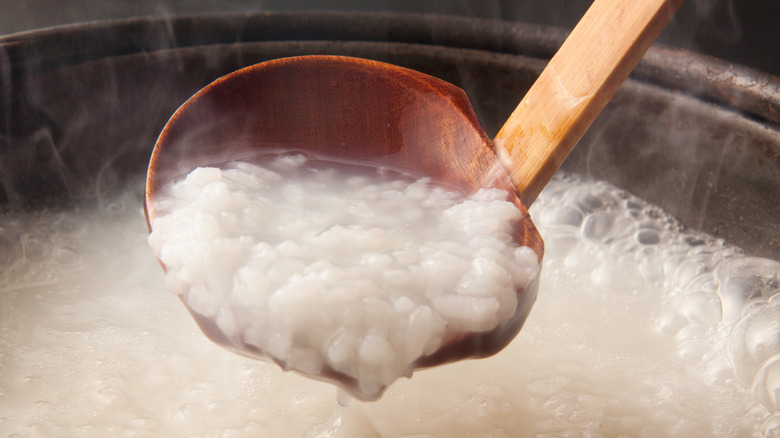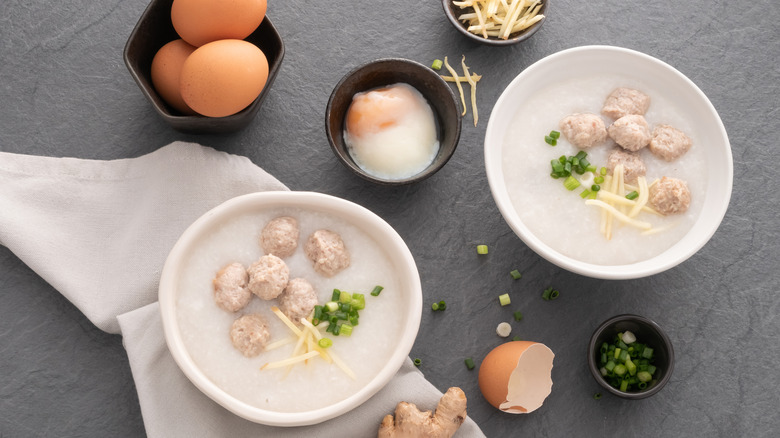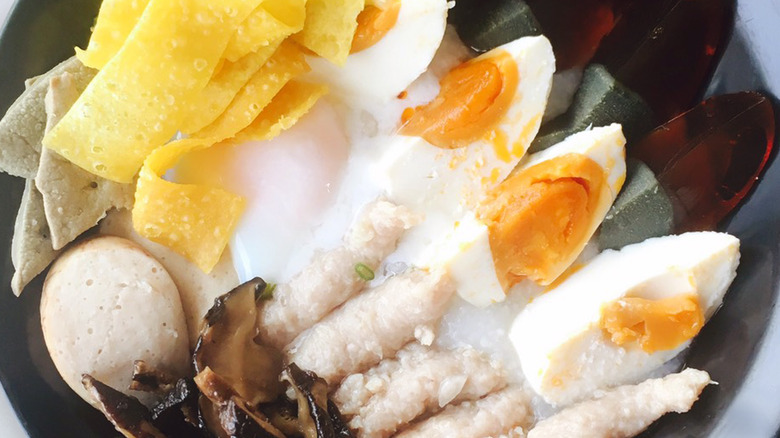Congee Vs. Lugaw: What's The Difference?
If you've ever traveled to Asia, you've likely encountered congee or lugaw. According to Yummy, rice porridge recipes have been popular in Asian cultures for thousands of years, where most areas have at least one eminent version (via Today). They're often viewed as comfort food dishes and a shared childhood experience, a recipe that is passed down through families, prepared for holidays, or eaten on sick days.
Rice-based recipes for lugaw and congee are popular across the Philippines, but it's easy to mix up the two if you don't do your research beforehand. Both are prepared with a rice base, either cooked and rinsed, or uncooked, and get rinsed and soaked in water or broth until it disintegrates into a thick, mushy consistency. Flavors, traditional preparation, and cultural terminology mark the stark differences between both dishes. No matter which porridge you prefer, you can guarantee to end up with an amazing meal.
What are congee and lugaw?
Lugaw is used as an umbrella term for many rice porridge dishes in the Philippines (via Yummy). Congee, on the other hand, is a Chinese dish. The term, which is actually English, is derived from the Tamil word kanji, per Today. The roots of the word go all the way back to ancient India, but all that you really need to know to understand the language difference between the two dishes is that congee refers to the Chinese version of the dish, whereas lugaw is the Filipino term.
Both dishes have a rice base, prepared in the ways mentioned above, and often resemble porridge or gruel. They're creamy, thick, and often served warm, but making a bowl of congee is not necessarily the same as making a bowl of lugaw. When preparing a bowl of the latter, the rice base is often flavored with a dash of fish sauce and garlic. Garlic chips, spring onion, hard-boiled eggs, and chicken or pork often accompany the dish (via Taste Atlas).
In the Philippines, congee is often thought of as the Chinese version of lugaw under a different name. Congee can often have a little more variety to it, in the form of different types of seafood, dumplings, and either quail eggs or ink-colored, preserved century eggs. The difference comes down to the cultural status of the dish and each chef's preference for flavors.
What do lugaw and congee taste like?
Congee and lugaw act as blank canvases for cooks to add ingredients and season to taste, per Eater. On its own, the rice base is bland and starchy when soaked in water. In their untouched, cooked form, lugaw and congee are meant to be easily stomached, which is why many consider the dishes as common sick day meals. If broth is used, you can bring out different flavors based on the type used and the amount of broth added. How liquidy the finished product is, through varying rice-to-water ratios and soaking times, is also dependent on personal preference.
Taste depends on what you add in. In the Philippines, lugaw is often cooked or topped with fish sauce, garlic, and scallions (via Yummy). So, it's safe to expect the pungent, mustardy taste of garlic and the unmistakable taste of green onions. If you've never tried fish sauce, Bon Appétit describes it as a complex blend of savory, salty, sweet, and briny flavors with an unmistakable fishiness.
For congee, much of the same applies. According to Unfamiliar China, expect some sort of oil and toppings like cod, pork flakes, eggs, or chicken — these extras add both flavor and substance. Ginger is also a common addition to congee, elevating a zing of spicy sweetness.
What are some nutritional differences between congee and lugaw?
The nutrition of these two dishes varies based on preference. If you're served a bowl of lugaw or congee plain, rice and water don't have much substance (via Nutritionix). A cup of congee — 30 grams of rice cooked in a cup of chicken stock — rounds out to 190 calories. The single-serving is low in protein and fat, but just one cup accounts for 32 grams of carbohydrates, 11% of the recommended daily intake.
That's all for a cup of lugaw or congee sans toppings. Keep an eye on the fish sauce, though; just one tablespoon potentially has 1560 milligrams of sodium — that's 65% of the recommended daily intake, per Calorie King.
Since seafood like shrimp, prawns, crabs, and mussels can often top the Chinese version of congee, high percentages of protein, vitamin B3, zinc, and iron associated with eating seafood are added to the otherwise carb-based meal, according to Healthline. If you opt for century eggs, you can expect the same micronutrients and a little more protein than a fresh egg, with an increased iron content (via NutriNeat). Either way, you can't go wrong with either dish.



